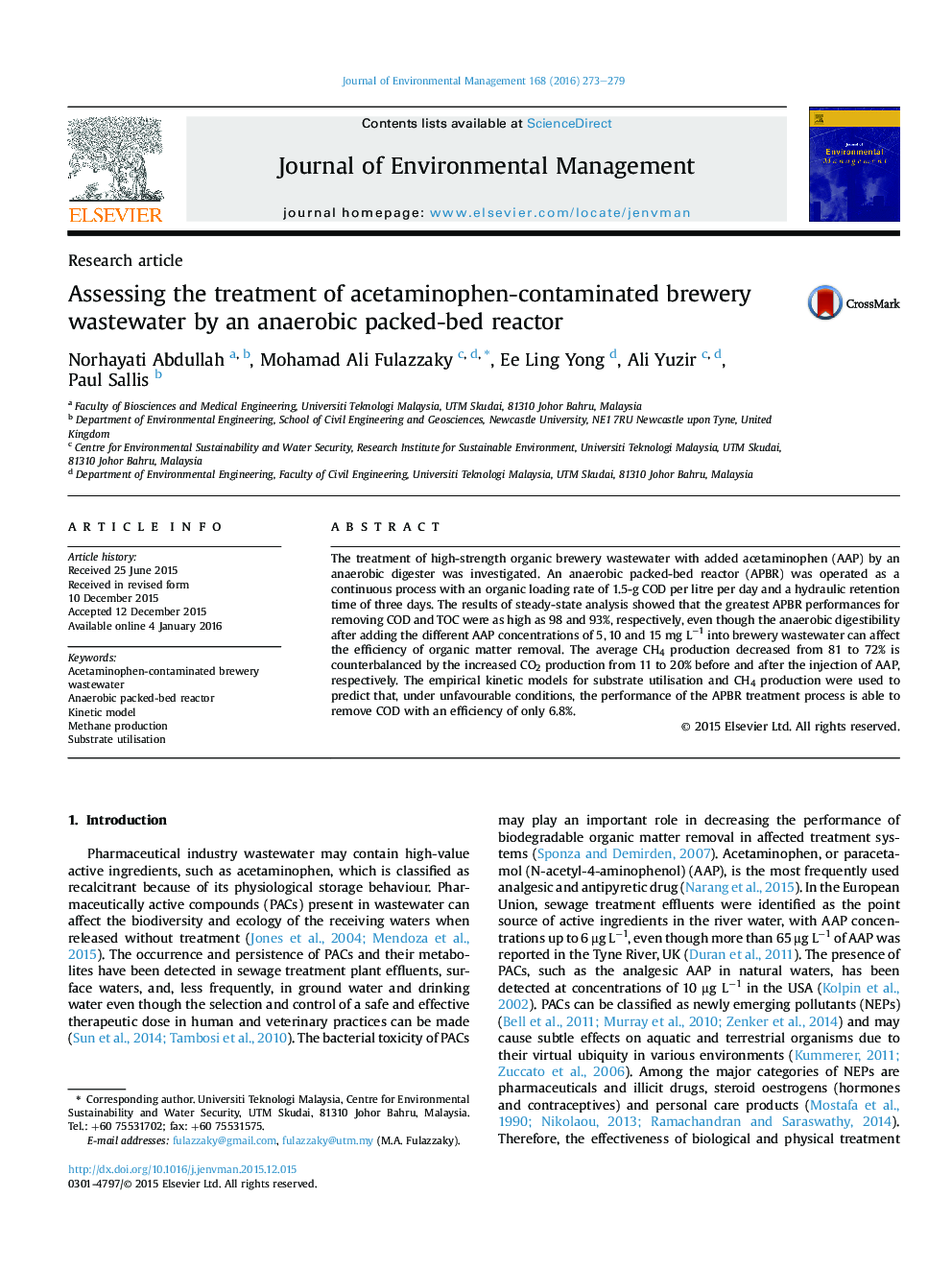| Article ID | Journal | Published Year | Pages | File Type |
|---|---|---|---|---|
| 1055567 | Journal of Environmental Management | 2016 | 7 Pages |
•The reatment of AAP-contaminated wastewater by an APBR was used assessed.•High efficiency of COD and TOC removal were verified under steady state.•The decreased CH4 production counterbalanced by an increase in CO2 production.•The kinetic models of substrate utilisation and CH4 production were proposed.•The performance of APBR under unfavourable conditions was predicted.
The treatment of high-strength organic brewery wastewater with added acetaminophen (AAP) by an anaerobic digester was investigated. An anaerobic packed-bed reactor (APBR) was operated as a continuous process with an organic loading rate of 1.5-g COD per litre per day and a hydraulic retention time of three days. The results of steady-state analysis showed that the greatest APBR performances for removing COD and TOC were as high as 98 and 93%, respectively, even though the anaerobic digestibility after adding the different AAP concentrations of 5, 10 and 15 mg L−1 into brewery wastewater can affect the efficiency of organic matter removal. The average CH4 production decreased from 81 to 72% is counterbalanced by the increased CO2 production from 11 to 20% before and after the injection of AAP, respectively. The empirical kinetic models for substrate utilisation and CH4 production were used to predict that, under unfavourable conditions, the performance of the APBR treatment process is able to remove COD with an efficiency of only 6.8%.
